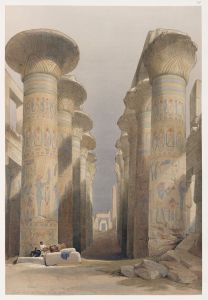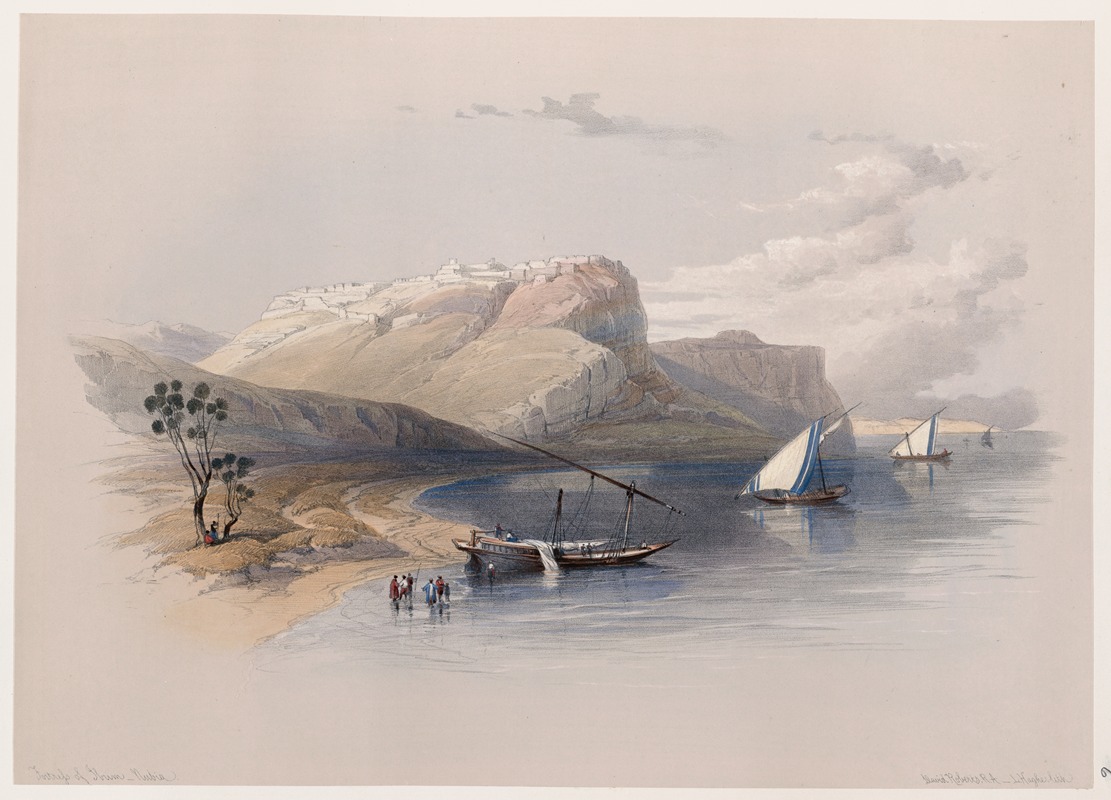
Fortress of Ibrim, Nubia.
A hand-painted replica of David Roberts’s masterpiece Fortress of Ibrim, Nubia., meticulously crafted by professional artists to capture the true essence of the original. Each piece is created with museum-quality canvas and rare mineral pigments, carefully painted by experienced artists with delicate brushstrokes and rich, layered colors to perfectly recreate the texture of the original artwork. Unlike machine-printed reproductions, this hand-painted version brings the painting to life, infused with the artist’s emotions and skill in every stroke. Whether for personal collection or home decoration, it instantly elevates the artistic atmosphere of any space.
"Fortress of Ibrim, Nubia" is a painting by the Scottish artist David Roberts, created in the 19th century. David Roberts, born in 1796 and died in 1864, was renowned for his detailed and picturesque depictions of the Middle East and North Africa. His works are particularly noted for their historical and architectural accuracy, capturing the essence of the regions he visited during his travels.
The painting "Fortress of Ibrim, Nubia" depicts the ancient fortress of Ibrim, located in Lower Nubia, which is now part of modern-day Egypt. The fortress of Ibrim holds significant historical importance as it was a strategic military and trading post for various civilizations over the centuries, including the Egyptians, Romans, and Ottomans. It is situated on a rocky outcrop overlooking the Nile River, providing a commanding view of the surrounding area.
David Roberts visited the site during his extensive travels in Egypt and Nubia between 1838 and 1839. His journey was part of a larger expedition to document the ancient monuments and landscapes of the region. Roberts' work was instrumental in bringing the grandeur and mystery of these ancient sites to the attention of the European public. His paintings were later published as lithographs in the acclaimed series "The Holy Land, Syria, Idumea, Arabia, Egypt, and Nubia," which further solidified his reputation as a leading Orientalist artist.
In "Fortress of Ibrim, Nubia," Roberts captures the imposing structure of the fortress with meticulous attention to detail. The painting showcases the rugged terrain and the fortress's strategic position along the Nile. The use of light and shadow in the artwork highlights the texture of the stone walls and the natural landscape, creating a dramatic and evocative scene. Roberts' ability to convey the scale and majesty of the fortress is evident in this work, making it a valuable historical record as well as a piece of art.
The fortress itself has a long and varied history. It was originally established during the Pharaonic period and later saw significant developments during the Roman and Christian eras. In the medieval period, it became an important stronghold for the Muslim rulers of the region. The site continued to be of strategic importance until the 19th century when it was partially submerged due to the construction of the Aswan High Dam and the resulting formation of Lake Nasser.
David Roberts' painting not only serves as a visual document of the fortress's appearance in the 19th century but also reflects the broader historical and cultural significance of the site. His work remains an important resource for historians and art enthusiasts alike, providing insight into the architectural and historical heritage of Nubia.
Overall, "Fortress of Ibrim, Nubia" by David Roberts is a testament to the artist's skill in capturing the essence of historical sites and his contribution to the documentation and appreciation of ancient civilizations.






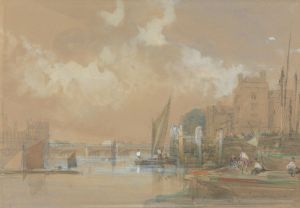
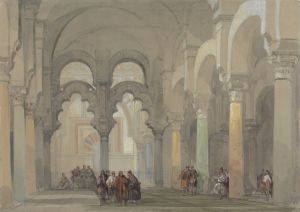


![Excavated temples of Aboosimble [Abû Sunbul], Nubia.](/imgs/217481/s/david-roberts-excavated-temples-of-aboosimble-abu-sunbul-nubia-2ca5e7e8.jpg)
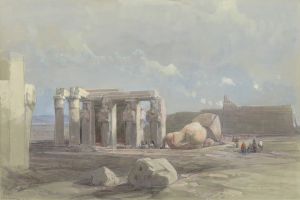
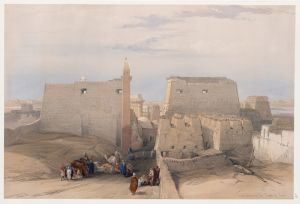

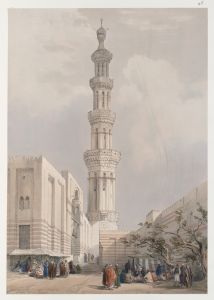
![Ruins. Temple on the Island of Biggeh [Bîga, Bîjah], Nubia.](/imgs/217537/s/david-roberts-ruins-temple-on-the-island-of-biggeh-biga-bijah-nubia-1cd1f41d.jpg)
![Temple of Dandour [Dendûr], Nubia.](/imgs/217545/s/david-roberts-temple-of-dandour-dendur-nubia-8921547f.jpg)
